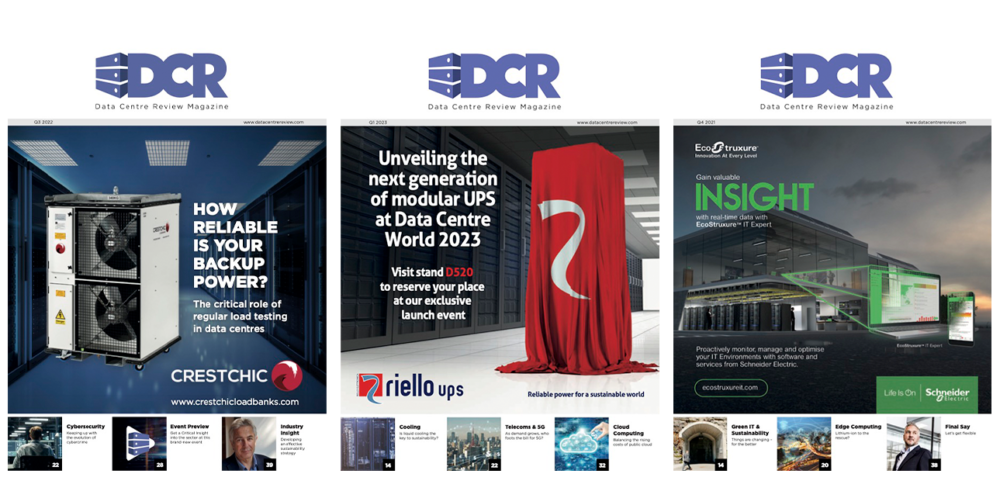Matt Evans, CEO at Lennox Data Centre Solutions, argues the skills gap – not infrastructure – is the risk that could stall AI and everyday digital life unless we invest in people, training and succession.
As someone who’s been working in data centres and engineering for two decades, I can tell you the biggest challenge facing the digital economy today isn’t technology. It isn’t supply chains, energy prices or cooling.
It’s people – or, rather, the lack of them.
We are facing a massive talent shortage across the industry. This isn’t a minor hiccup, it’s a full-blown crisis. More than half of data centre operators are struggling to recruit and nearly as many are finding it harder than ever to keep the talent they do have, according to data from Uptime Institute.
And yet, we’re building the physical backbone of the digital world.
Let me put that into perspective. Every time you ask a generative AI model a question, stream a movie, make a bank transfer or get a text from your fridge telling you to buy milk, a data centre is involved.
These are the homes the internet lives in, but not enough people know that. And fewer still know how to build or operate them.
What’s going wrong?
Traditional infrastructure jobs no longer have the allure they once did, with Silicon Valley and startups capturing the imagination of young talent. Let’s be honest – it just isn’t seen as ‘sexy’ anymore.
But while people dream about coding the next app, they forget someone has to build and maintain the physical networks that power everything. And that ‘someone’ is disappearing fast.
Another factor is that the data centre sector hasn’t done a great job of telling its story. We’re seen as opaque, technical and behind closed doors.
Most students don’t even know what a data centre is, and until something breaks (ChatGPT not responding or a payment system failing at the till) it doesn’t even register. That’s got to change.
We need to reframe the narrative. Working in data centres isn’t about grey boxes and cabling. It’s about solving real-world problems that affect billions of people around the world, every single second of every day.
There’s no wonder these behemoths were classed as ‘critical infrastructure’ here in the UK just last year by the UK Government; they help to power our everyday necessities. It’s mission critical, and that’s the narrative we need to be selling.
And it’s not just about talent on the ground. We’re also seeing a surge in physical infrastructure investment. New factories are being built across Europe and beyond, including our new state-of-the-art facility in Lyon.
That kind of growth sends a clear message: this industry isn’t slowing down. It’s accelerating, and we need the people to match the progress.
The speed of change
Two years ago, we were running racks at 10-15kW and things were stable. Now, we’re seeing up to 600kW.
No one knows if the demand will reach 1,000kW in two months, two years or two weeks. That’s terrifying, yes. But I think it’s also very exciting.
However, you can’t train someone overnight to deal with that kind of complexity.
And you certainly can’t scale up skilled labour by just putting out a few job ads.
The industry has to invest – seriously – in education and training. That means partnerships with technical schools and universities. It means creating apprenticeships that don’t just teach theory, but instead immerse people in the full lifecycle of data centre design and operation.
And it means being honest about what this work entails and how critical it is to the global economy.
Passing on the torch
Fixing the skills gap isn’t just about hiring more people. It’s about keeping the knowledge we already have in the industry and finding ways to pass it on.
Right now, we’re on the verge of losing decades of expertise. Many of the engineers, designers and project leads who built today’s data centre infrastructure are approaching retirement.
While projects operate at a huge scale and could appear exciting to new engineers, we also have inherent challenges that come with relatively new sectors. For example, there can often be communication gaps and a lack of transparency that impacts everyone in the supply chain, and this is something that is broadly known across the industry.
The industry is still in its infancy and there’s still much to learn; I’ve experienced projects where initial timelines of six months are suddenly reduced to just three weeks – sometimes before an order is even placed. While we pride ourselves on being agile and adaptable, such rapid changes can be challenging and require us to react very quickly.
You can’t build a resilient workforce if your most experienced people are too overwhelmed to mentor or train others. And you certainly can’t develop young talent if they’re thrown into a high-pressure environment with no guidance or support.
We need to create space for succession; not just in job titles, but in day-to-day operations. That means structuring projects with enough foresight and flexibility that senior engineers can share their knowledge, rather than constantly firefighting.
One solution is an engineering-first, relationship-led approach – where problems are anticipated early, and the process is designed to reduce stress, not amplify it.
When you remove unnecessary friction, experienced professionals are more likely to stay. And when young talent sees that there’s a future for them in this industry, they’re more likely to commit.
Succession doesn’t happen by accident. It takes intentional design, just like the data centres we build.
What’s next?
I think it’s clear that we need an industry-wide shift in mindset. We need to make careers in data centres attractive, visible and rewarding, and start investing in people. Real investment, not lip service.
Because the truth is, without skilled people, the data centres of tomorrow won’t get built. And without data centres, the digital future we all assume is coming – AI, edge computing, smart everything – won’t arrive. Or worse, it’ll collapse under its own weight.
It’s time we got serious. Not just about racks and cooling, but about the humans who make it all happen. Let’s not wait for a breaking point to realise we should’ve done more.
We need to build the future – and the people who can sustain it – together.


